|
The Cameroon volcanic line
consists of a string of volcanoes that extend from the Atlantic ocean into
Cameroon (Fig. 1). The current period of volcanic activity started approximately
38 Ma ago (Fig. 3) and extends to the present. Intrusive rocks associated with
the province range in age from 66 to 30 Ma (Fig. 2). Since the volcanoes cross
the oceanic-continental boundary they have been of considerable interest. We
initiated the present study by determining additional trace elements, using INAA, for a subset of a suite of samples collected by Godfrey
Fitton, University
of Edinburgh. |
 |
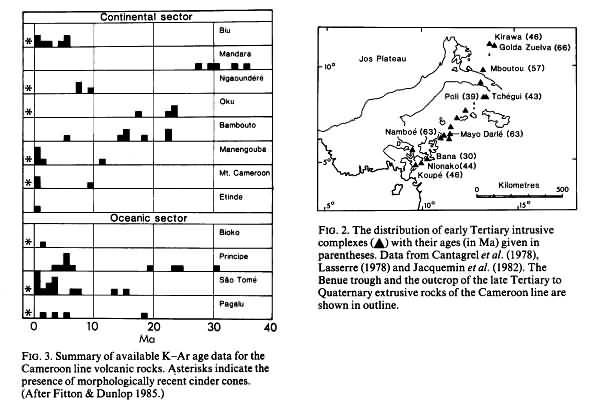 |
|
The rocks of the Cameroon volcanic line range in composition from picro-basalt
and basalt through intermediate compositions to phonolite and rhyolite (Fig. 4).
Silica saturated rocks are largely confined to the continental portion of the
province. A plot of Na2O versus SiO2 shows enrichment of
Na in the evolved rocks from the oceanic part of the province and a decrease in
Na in the evolved rocks from the continental part of the province. This
bifurcation of the Na (and alkali) trend is commonly noted in provinces that
contain both highly evolved silica-undersaturated and silica saturated rocks. |

| Fig. 4.
Alkali-silica plot for volcanic rocks from the oceanic and
continental parts of the CVL. |
|
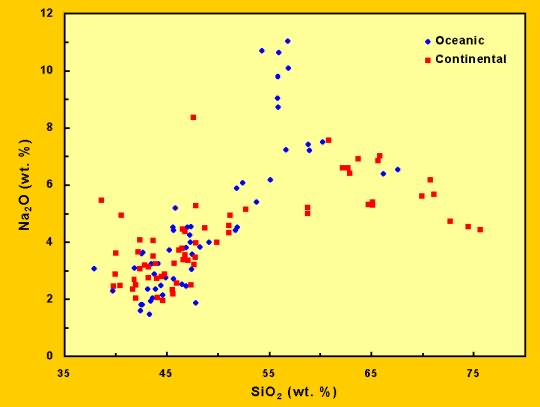
| Fig. 5. Na2O
versus SiO2 for volcanic rocks from the oceanic and
continental parts of the CVL. |
|
|
The Nb/Ta ratio for most of the samples falls within the normal mantle range of
15 - 20 (Fig. 6), but note the significant Ta depletion, and correspondingly
high Nb/Ta ratios, for some samples from the oceanic sector. This may be a
response to titanite fractionation. Some of the continental samples have Nb/Ta
< 15 which can be interpreted as a sign of crustal contamination. |
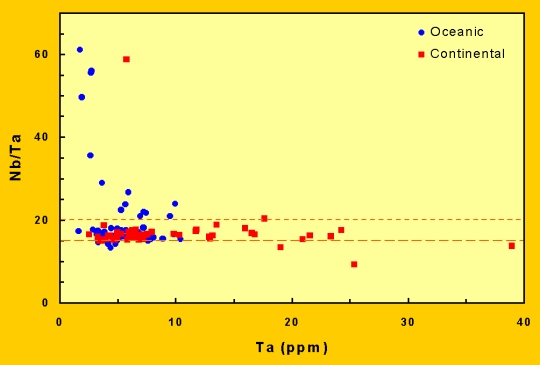
| Fig. 6. Nb/Ta versus Ta abundance.
Note that most samples fall between Nb/Ta = 15 - 20, ratios
typical of the mantle. |
|
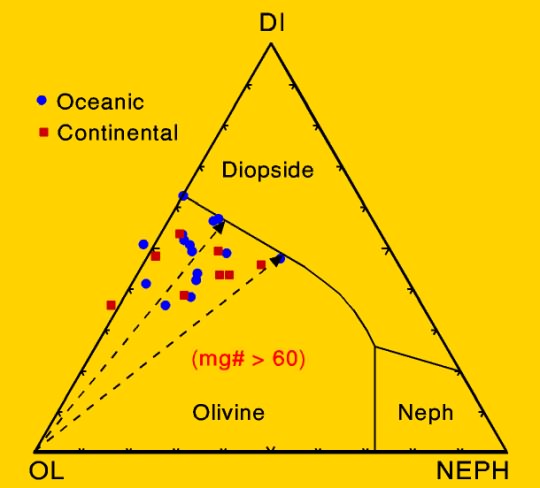
| Fig. 7. Projection of samples with mg#
> 60 into the Ol-Di-Neph phase diagram. The samples plot in
the olivine field indicating that olivine fractionation
controlled the early stages of magmatic evolution. |
|
|
Samples with mg# >60 plot in the olivine field on the
Diopside-Olivine-Nepheline phase diagram (Fig. 7) indicating that the early
stages of magmatic evolution are largely controlled by olivine fractionation.
Samples with mg#>60 fall in
the OIB field (Fig. 8) and the HIMU field (Fig. 9) supporting an OIB-like source
for these magmas. |

| Fig. 8. Samples with mg# >60 plot
in the OIB field on the Yb/Ta versus Y/Nb diagram. |
|
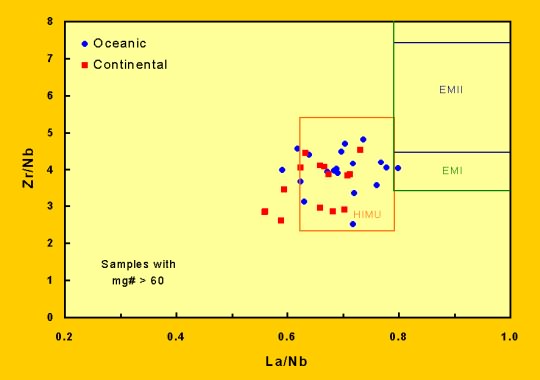
| Fig. 9. Samples with mg# >60
largely plot within the HIMU field on the Zr/Nb versus La/Nb
diagram. |
|
|
Compared to the East African rift system, basalts from the CVL are relatively
depleted in LIL elements (Fig. 10). This suggests that, relative to the mantle
under the East African rift system, the mantle under the CVL was not as enriched
in LIL elements. The REE systematics can be explained by small degree partial
melts (1-3%) of a garnet lherzolite mantle (Fig. 11). Hence, as a preliminary
conclusion we suggest that the CVL magmas were the result of small degrees of
partial melting of an only slightly enriched garnet lherzolite mantle.
|
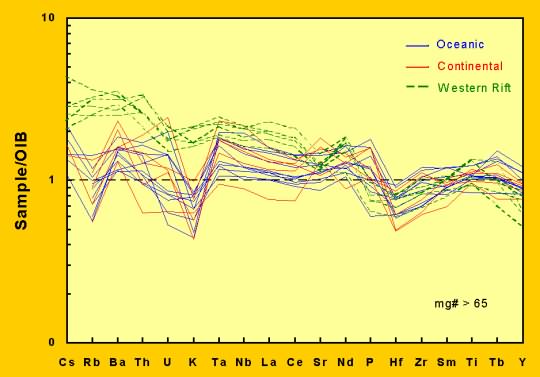
| Fig. 10. OIB-normalized plots of
basalts from the CVL and East African rift system. Note the
significant relative enrichment in LIL elements for the East
African basalts. |
|
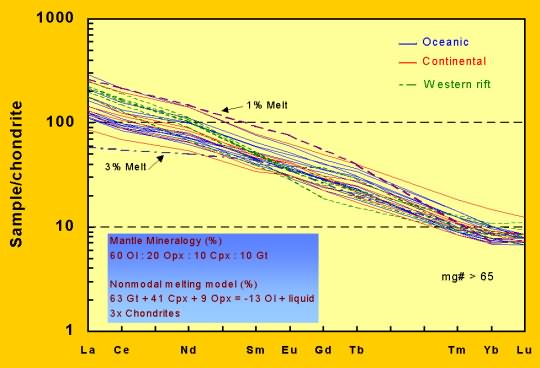
| Fig. 11. Melting model for CVL basalts |
|
|
Top
of page. |
 U. Mass Lowell
U. Mass Lowell








